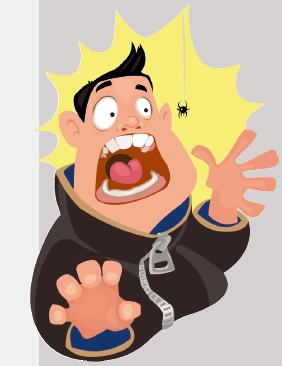THE FEAR FACTOR
Interviewer: So what exactly is a phobia?
Expert: Well, nearly everyone fears something, but when the fear becomes exaggerated and irrational, it’s a phobia, which is the most common form of anxiety disorder. There are many types of phobias that are known as specific or simple phobias. Common phobias include a fear of animals, particularly spiders, a fear of darkness or nyctophobia, or perhaps a fear of clowns, flying or public speaking. Now, you may not be keen on some of these things I’ve just mentioned, but most of us find a way to cope with the situation and don’t let it interfere with our daily lives. However, if you have a phobia, you may suffer from symptoms such as an increased heart rate, dizziness, excessive sweating or even a panic attack. You might end up going to extreme lengths to change your daily life so as not to come into contact with the thing or situation that causes your phobia. For example, imagine a friend of yours has a pet tarantula. If you’re not a huge fan of spiders you may not enjoy spending time in his house, but most of us would put up with it. However, if you are an arachnophobia sufferer, you would probably refuse to visit him at home altogether. So you can see how phobias can have a real impact on oursocial relationships.
Interviewer: And why do people suffer from phobias?
Expert: Well, there are a couple of causes. If a child grows up with a parent who suffers from a phobia, the child is far more likely to develop the same irrational fear. Also, many phobias are actually triggered by a traumatic past event, often during childhood. So, perhaps an encounter with a vicious dog or falling into a swimming pool and nearly drowning as a child could feasibly develop into cynophobia, a fear of dogs, or aquaphobia, a fear of water.

